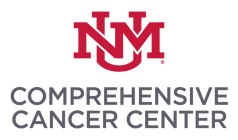Serving a rural population with many people from minorities, the University of New Mexico Comprehensive Cancer Center (UNMCCC) strives to ensure that all cancer patients have access to world-class care. UNMCCC has grown rapidly to become the state’s largest provider of cancer treatment. Its multidisciplinary research programmes make many translational discoveries in diagnostics and therapies. Here we speak to the centre’s director and chief executive officer, Cheryl Willman.

Why did you come to UNMCCC?
As a hematopathologist, a medical doctor who works on blood diseases, I’ve always been drawn to the intersection of science and clinical medicine. Here in New Mexico, there’s a great need for better diagnostic and clinical interventions that reduce cancer burdens in our population. Our centre is dedicated to the research, training, and outreach that improves the quality of cancer care. I felt it was important to work in a place where scientists and clinicians work together on groundbreaking advances that benefit patients in community settings.
What types of capabilities does UNMCCC bring to the table?
As a National Cancer Institute (NCI)-designated comprehensive cancer center, we have to show that we can generate new therapies and diagnostics and deliver them in our catchment area. For us, that means the entire state of New Mexico. In addition to scientists doing basic and applied research, we have 142 oncologists coordinated through a statewide network. Each of them has access to our clinical trials and specialty services, and that helps us provide local care and advanced interventions, even in remote areas.
New Mexico residents can now be matched to clinical trials by results of genomic testing?
Yes, we recently joined the Oncology Research Information Exchange Network (ORIEN), which links patients with the most promising treatments on the basis of tumor sequencing. We have a clinical trial through ORIEN now investigating combination treatment with PARP inhibitors, and immunotherapy in women with advanced BRCA-1 epithelial ovarian cancer.
What kinds of unique challenges does UNMCCC face in its catchment area?
In New Mexico 52% of people are either Hispanic or American Indian, and they have the nation’s highest rates of liver, kidney, gastric, and colorectal cancer. Low screening rates could explain some of those disparities. For instance, screening for colorectal cancer averages 60% nationally, compared to just 4% in our tribal nations. Cancer screening in tribal nations—as well as navigating care for people with positive findings—requires culturally and legally appropriate methods. We currently have funding from the NCI’s Moonshot program to develop these approaches. Could genetic factors also explain the disparities?Yes. In our research, we sequenced samples from 1,000 unselected children for whom acute lymphoblastic leukemia therapy failed, and found that Hispanic and American Indian children have a unique spectrum of tyrosine kinase mutations that we believe cause their disease. Some of these mutations are now being targeted with tyrosine kinase inhibitors in clinical trials. This is a very satisfying example of fundamental science at our centre moving towards diagnostics and therapy.
How does UNMCCC address links between environmental factors and cancer in the population?
We have a legacy of contamination from the nuclear bombs that were tested in the state, as well as thousands of abandoned mines that pollute the soil, air, and groundwater. Fortunately, scientists here created the New Mexico Tumor Registry in 1966, which has been gathering surveillance data for all cancer cases in the state ever since. A founding member of the NCI’s Surveillance, Epidemiology, and End Results Program, that registry is a goldmine for testing hypotheses about cancer patterns and trends. We also collaborate extensively with our college of pharmacy to investigate the extent of contamination in hard rock and uranium mines and potential roles in cancer causation. The National Institutes of Health and the Environmental Protection Agency have provided large amounts of funding for that research.
How do you assess exposures in the population?
Our scientists use whole genome sequencing to identify mutational signatures that match up with specific exposures or behaviors. Then we use those signatures as screening tools in cells to determine if someone came in contact with say, arsenic, or uranium, or other heavy metals. Meanwhile, collaborators in our pharmacy school have devised ways to measure the amounts of these agents in tissues with mass spectrometry. Together, these approaches make it possible to accurately quantify exposures. These collaborations illustrate the research nexus between measuring environmental exposures unique to our region, and genomic efforts to better understand cancer disparities in the population.


